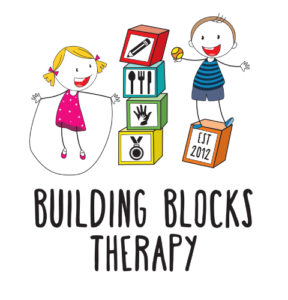“Strengths-based”…. What does it mean?
“Strengths-based” or “strengths-based practice” is a term that you may have heard your therapist, or someone in the allied health field use. The Department of Education (2012) defines the strength-based approach as “an approach to people that views situations realistically and looks for opportunities to complement and support existing strengths and capacities as opposed to focusing on, and staying with, the problem or concern.” This means looking for the strengths and positive aspects of all participants, rather than focusing on problems or concerns. It doesn’t mean that we are ignoring the problems or challenges that families come to us to address, but we try to view these problems in the context of each child’s strengths, and what assets, skills and supports they already have that can be used to address the problem.
The six standards for a strengths based approach, as outlined by Rapp, Saleebey and Sullivan (2008) are:
- Goal orientation: The family and child themselves identify the most important goals, with support and input from a therapist, rather than the therapist identifying the most important goals in their own opinion. This way what is most important to the family and child are at the core of our goals.
- Strengths assessment: We identify the strengths in the child and family, and resources they have access to, to support them in working to address a challenge.
- Resources from the environment: Identifying that every setting, there are people who have something to contribute.
- Explicit methods are used for identifying client and environmental strengths for goal attainment: At Building Blocks Therapy, we use assessments such as the Adaptive Behaviour Assessment System, or the Sensory Profile, to identify the child’s strengths and resources that can be used to work towards a goal.
- The relationship is hope-inducing: By using the strengths-based approach, we aim to give families hope
- Meaningful choice: We highlight that the family and child are the expert on their own situation and experience, and value this knowledge in any intervention.
Why do we use a strengths-based approach at Building Blocks Therapy?
By using a strengths-based approach, we are aligning our therapists to work with families as a partner working towards a goal, rather than coming in to ‘fix’ a problem situation (Smith & Ford, 2013). This supports parents to feel more empowered working towards a goal, and reinforces the value of the family in achieving goals! The strengths-based approach also aims to shift the culture to think more positively about those who need support, and to emphasise the independence, resilience, choice and wellbeing of the child and family (SCIE, 2015).
How can you use a strengths-based approach at home?
- Identify and praise your child’s efforts, even more so than achievements
- Acknowledge your child’s experience and repeat back to them showing that you have heard and understood
- Use ‘us versus the problem’ language, showing that you and your child are on the same team, working against a challenge. An example of this could be a homework task being late, and asking ‘what can we do about this, how will we solve this problem’
- Comment on strengths shown by your child e.g. “you were so patient to wait for your turn, I know you were really excited to have a go”
- Help your child to rephrase negative statements. For example if your child comments “I can’t do that”, help them to rephrase “I will be able to do this if _____” / “It will be hard but I can give it a go” / “It’s ok if I make a mistake”
References
Department of Education and Early Childhood development. (2012). Strength-based approach. Melbourne, Victoria.
SCIE – Social Care Institute for Excellence. (2015). Care act guidance on strengths-based approaches. Retrieved from: https://www.scie.org.uk/strengths-based-approaches/guidance
Smith, L., & Ford, K. (2013). Communication with children, young people and families–A family strengths-based approach. Child, youth and family health: Strengthening communities, 91-110.
Rapp C, Saleebey D and Sullivan PW (2008) The future of strengths-based social work practice, 4th Ed) Boston: Pearson Education
